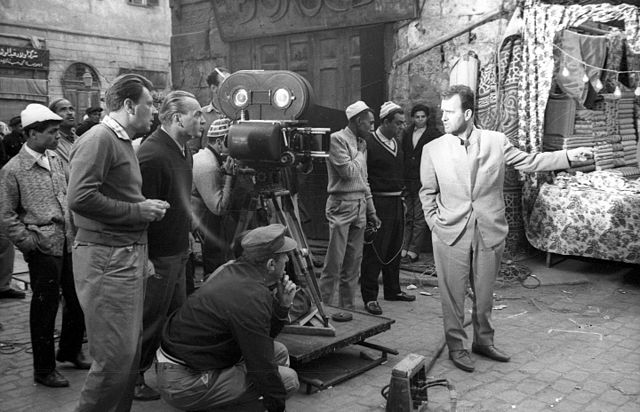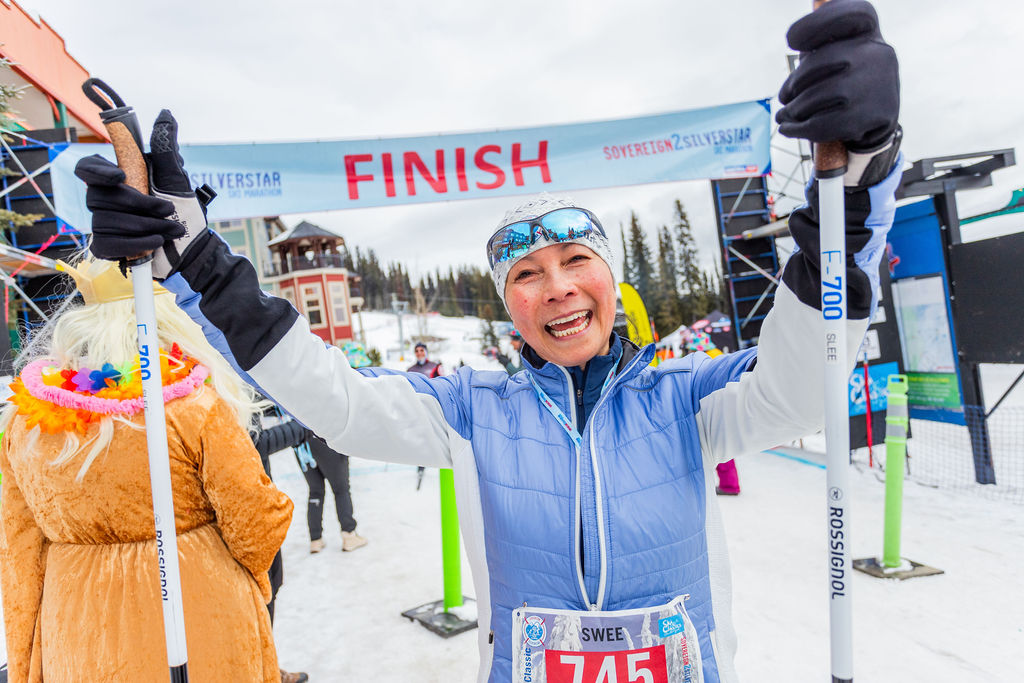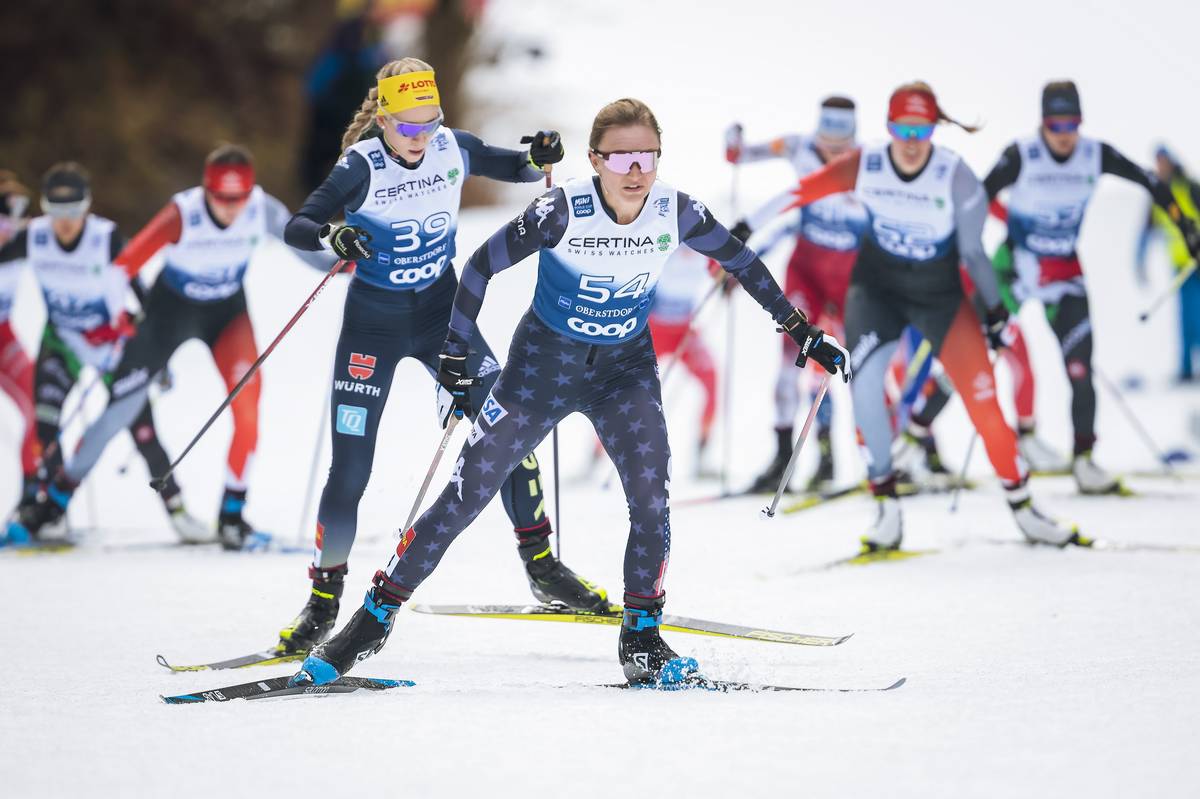
Editor’s note: FasterSkier’s initial coverage of the women’s relay at this year’s FIS Nordic Junior World Championships in Oberwiesenthal, Germany, gave just the facts: The American women, fourth in this event a year before, skied their way up to second this year. This was entirely true, but didn’t get at the whole story. FasterSkier analyst Devon Kershaw, in a podcast shared later that day, hinted at some of the madness behind these facts, proclaiming early in the podcast, “This was a hell of a day. … You had so much weird stuff happening.” (Kershaw’s podcast speaks at some length about what appears to have happened on course.) Now, longtime American race official John Estle, who was on-site for the relay, provides a postmortem of the relay, focusing on lessons to be learned by organizers, officials, coaches, and skiers moving forward.
We have linked to a PDF of John Estle’s Best Practices when it comes to organizing races: Estle’s Recommendations/Caveats
By John Estle
What follows is a postmortem of the women’s 4 x 3.3 k relay at Junior World Championships in Oberwiesenthal. Several mistakes were made as it relates to the race. The worst outcome was that two of the leading teams were disqualified for skiing off course. There’s an oft- but incorrectly-quoted rule that goes something like this: “It’s the skier’s responsibility to know the course.” In some ways this is true. Sport should promote self-responsibility and independence. Yet, those involved with race organization should also be setting athletes up for success. That can mean many things. At its most fundamental, it means setting courses that minimize the possibility for skier error while racing. We’ll circle back to these thoughts in the summary, but for now, let’s explore what transpired.
To be a spectator standing trailside at the one-kilometer mark of the third and fourth legs of the women’s 4 x 3.3 k relay earlier this winter was to be thrown a crazy curveball that made one wonder what in the world had just happened to cause the U.S. and Swedish teams to lose 40 seconds to the Germans in a kilometer that was mostly downhill and gently rolling – a fast kilometer with a net elevation loss.
The Third Leg Confusion:
At the beginning of the third leg, the U.S. and Sweden were in third and fourth places, respectively, 15 seconds off the leading Swiss (with Poland right behind the Swiss in second place), and 24 or 25 seconds ahead of the Germans in fifth. One hundred and fifty seconds later (2:30), the German skier had gained 40 seconds on the field and was now 15 seconds in front of the U.S. and Sweden. What?
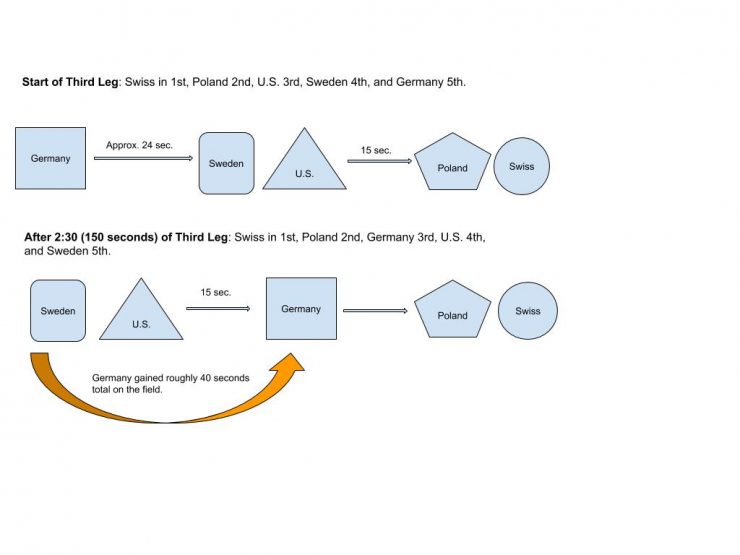
Spectators were wracking their brains trying to figure out what could have happened? A major fall? Incredibly bad skis? There was no evidence on the skiers’ suits of a fall, nor did their skis look that bad. The U.S. and Sweden remained about 15 seconds behind the Germans for the remainder of the leg. The Swiss and Poles were still off the front. Very puzzling.
The Fourth Leg Confusion:
On the final leg, the same thing happened, only this time it was both the Germans and the Poles who gained 40 or more seconds on the field over the same first kilometer. How did the U.S. and Sweden go from 16 seconds behind the German team and 12 seconds behind the Poles to over a minute behind the Germans and Poles in just over two minutes? Again the same questions were asked.
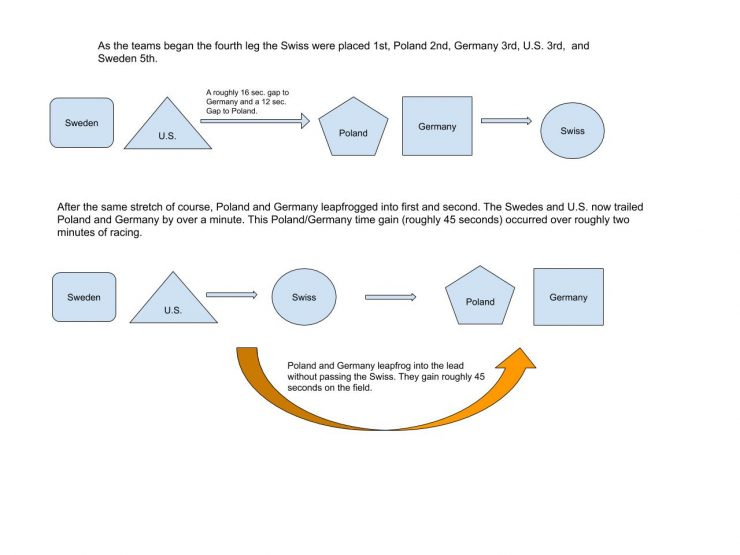 As spectators discovered upon returning to the stadium, the German leg three and leg four skiers, and Poland’s leg four skier, had taken a bit of a shortcut – following the course of the skate leg that would be used later that day for the men’s 4 x 5 k (2 x 2.5 k each leg) relay.
As spectators discovered upon returning to the stadium, the German leg three and leg four skiers, and Poland’s leg four skier, had taken a bit of a shortcut – following the course of the skate leg that would be used later that day for the men’s 4 x 5 k (2 x 2.5 k each leg) relay.
Had the original order of finish held, Poland would have won the gold, Germany the silver, and Switzerland the bronze. However, following the disqualifications of Germany and Poland for not following the marked course, the medals went to the third, fourth and fifth teams across the line: Switzerland, USA, Sweden. These disqualifications are reflected in the official results for the race available on the FIS results site. (It is the consensus of those I have spoken with about the race that the U.S., regardless of the disqualifications, was positioned to win a medal.)
Obviously, that is not the sort of thing that should happen at a World Championship. It was a tragedy for the German and Polish skiers and their teams, and it was extremely puzzling during the race for the Swiss, U.S., and Swedish skiers who found themselves skiing behind skiers who had never passed them.
With the perspective of time and, after looking at video and time splits, and speaking to race officials, it is possible to provide a fairly accurate description of what transpired during the race. The fact that there was a major error, and that it possibly could have been prevented, offers some useful lessons for all parties involved: organizers, officials, coaches, skiers.
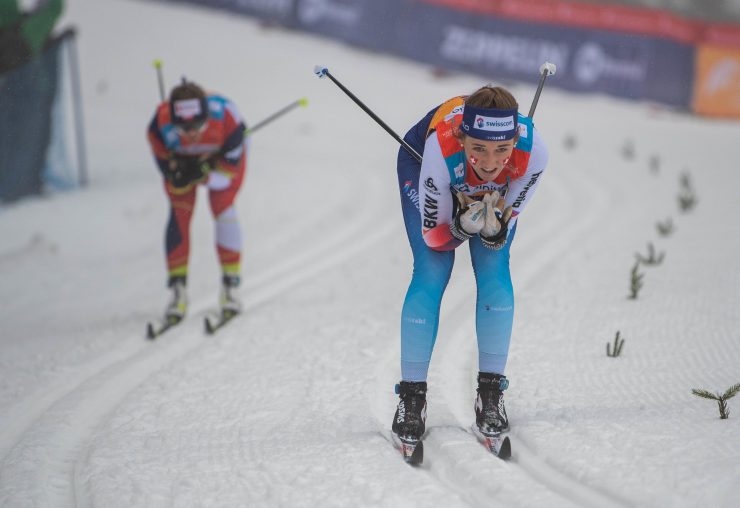
Background – The courses
The Oberwiesenthal U23/Jr WSC organizers sent out an information packet in advance of the event with maps of the courses that they intended to use for each of the competitions. However, for some reason, the courses on which the competitions were held often differed from what had been planned. Snow was in short supply prior to the Championships, and plans were made to use alternative courses, but by the time the races began, there appeared to be sufficient snow – there was enough that they could use a 5 k course for the 30 k mass-start events. It should be emphasized that race organizers had to scramble a bit due to the lack of snow up until 2-3 days prior to the first race, and not having perfect maps may have been a result of that scrambling. Nonetheless, when courses change from the original plan, for any reason, there can be confusion, and “version control” problems with maps.
Also, the maps that the coaches received (at least the maps I was shown by coaches) were not the maps submitted by Oberwiesenthal to FIS for homologation. The “maps” that were used to show the courses consisted of red or blue magic marker traced on a sat photo image that was several years old. The sat photo image showed the biathlon range in a completely different position and orientation from how the biathlon range is currently situated. The intersection where problems occurred in the relay was very near the biathlon range.
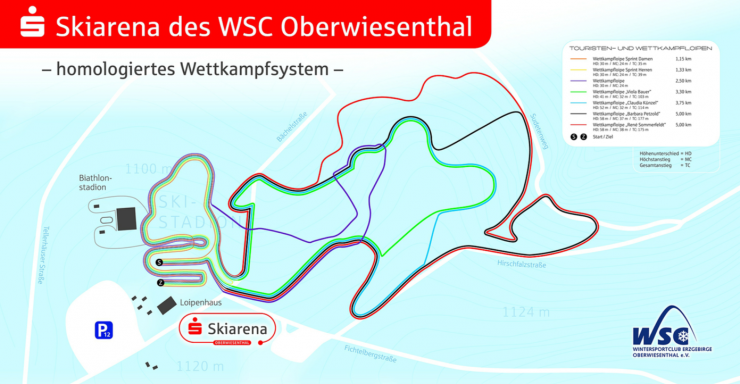
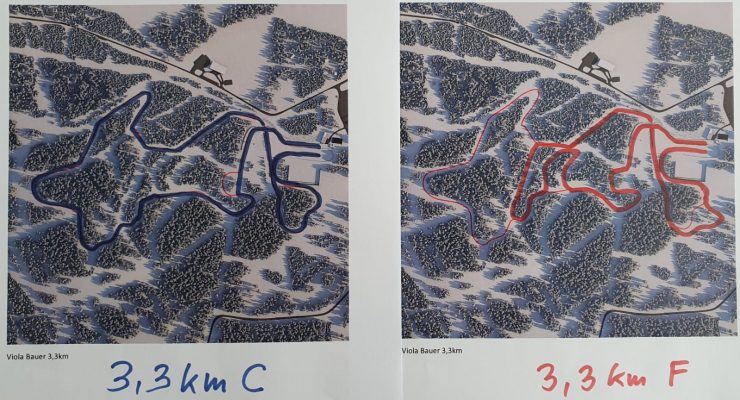
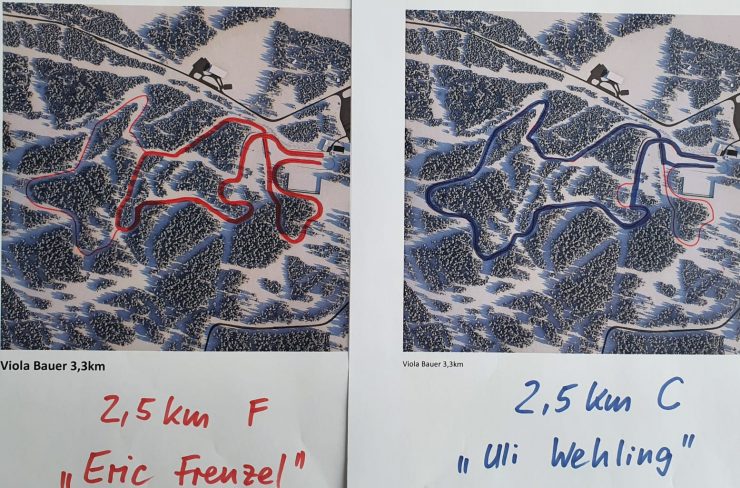
It is somewhat of a standard in places that have “two of each” distance for courses that “blue” is a term for the classic course, and “red” is the term used for the free technique course. This is nowhere in the FIS ICR or Homologation Rules but is a common (but not universal) practice. For the relays, Oberwiesenthal organizers used this naming/mapping convention: blue for classic and red for skate.
Standard configuration when using different courses for classic technique and free technique is to keep the courses as separate as possible, with as little common track as possible, other than leaving the start, approaching the finish, and passing through the lap/exchange.
Another feature of good configuration for courses is to have each successively shorter course be a subset of its longer course “big brother”. This simplifies course marking, course changes, and makes inspection by coaches and athletes less confusing.
In Oberwiesenthal there is a single network of trails that does not lend itself to separating classic and free courses. There was substantial overlap between not only the skate and classic courses for women, but between men’s and women’s courses as well.
Because of the use of the “blue” and “red” naming/mapping convention and the abundance of common track between the classic and free courses, and between the men’s and women’s courses of similar AND different techniques, there were some intersections where skiers had to make a choice that required a bit of thought.
Given the twists and turns and varying routes of the many courses at Oberwiesenthal, it would have been difficult for someone not familiar with the local trails (skiers, coaches, officials) to wrap their head, in advance of the race, around all the options and how a skier might approach the choices on the course.
The Key Intersection on Course
The intersection where the problem occurred was early in the course. The women’s skate course went straight ahead. The women’s classic course and the men’s skate course turned right. Remembering that classic was marked with blue and free technique with red, there were red signs pointing in both directions at this junction. The signs were labeled with the distance or gender to which they applied, but . . . there were still two red signs pointing free technique leg skiers in different directions.
Because the women classic skiers went the same way as the men did skating, it was not possible, or desirable to block off that course with V-board or some other sort of barrier. To further complicate matters, the Lithuanian team was so far behind the leaders that their leg two classic skier finished after Switzerland’s leg three skate skier finished. So, there was some severe overlap within the field that precluded blocking off trails during the competition.
Normally inspecting the course and asking questions should help a skier follow the course. When coaches ski the course, if they see something that they think will be a problem for their skiers, they should bring the issue up with a Jury member. When Jury members inspect the course, they should always do so through the eyes of a skier who is in a race. But that’s not always easy.
Suffice it to say, that even though 33 of 36 skiers made the correct choice when passing this trail junction, it was ripe for a problem.
Team Captains’ Meetings
The courses for the relays were presented to the coaches at the Team Captains’ Meetings (TCM) on the day prior to the event. According to a party in attendance at the meeting, no Team Captains brought up the question of the courses, as far as whether they might be confusing to skiers, etc.
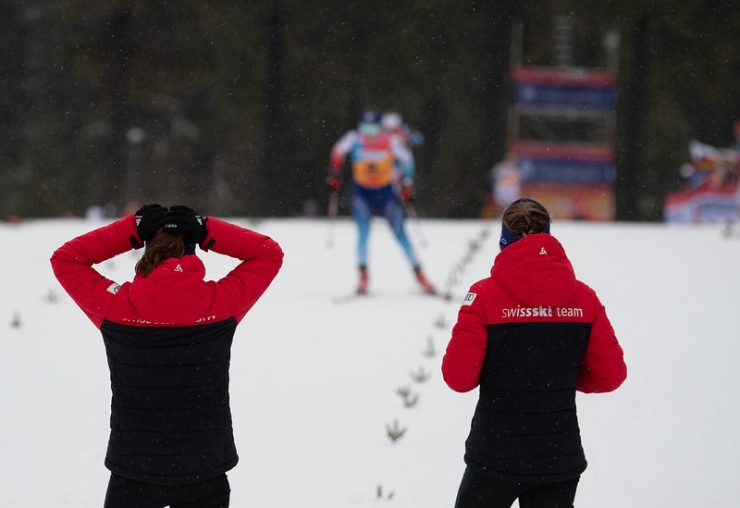
Race Day
On race day the courses were marked correctly, and skiers and coaches had the opportunity to inspect the course, see if there were any problem areas, ask questions if in doubt as to the correct route, and “memorize” the route.
It must be assumed that all the skiers did such an inspection, as well as many coaches. On race morning, no one brought up the junction in question as a problem area to the Jury. That being the case, the Jury has to assume that all is well.
As was described above, the third-leg German skier and the fourth-leg skiers from Germany and Poland went the wrong, shorter way. I am certain that the German skiers were not intentionally cutting the course. The Polish leg four skier was following the German. The Swiss skier in the lead was out of sight, having gone the correct way. The German turned wrong, and the Polish skier followed.
Post-Race
To people who were familiar with the course configuration, it may have been immediately obvious what had happened once skiers had taken a shortcut, but it was not obvious to someone unfamiliar with the Oberwiesenthal trail network – it was very puzzling.
That puzzlement was widely shared, as there were many Polish and German fans waiting near the finish area ready to celebrate their “gold” and “silver” medals. As word of the violations and disqualifications spread, and with the USA and Swedish teams standing by for awards – with no sign of the German or Polish teams – the German and Polish fans melted away, leaving only a lot of happy Swiss, American, and Swedish fans to applaud their skiers.
Luckily for the teams that skied the correct route and for the Competition Jury, there was video evidence showing the skiers taking the incorrect course. That made the decision to disqualify the teams very simple in light of FIS International Competition Rule (ICR) 343.6, which provides, “Competitors must follow the marked course in correct sequence from start to finish and must pass all control points.”
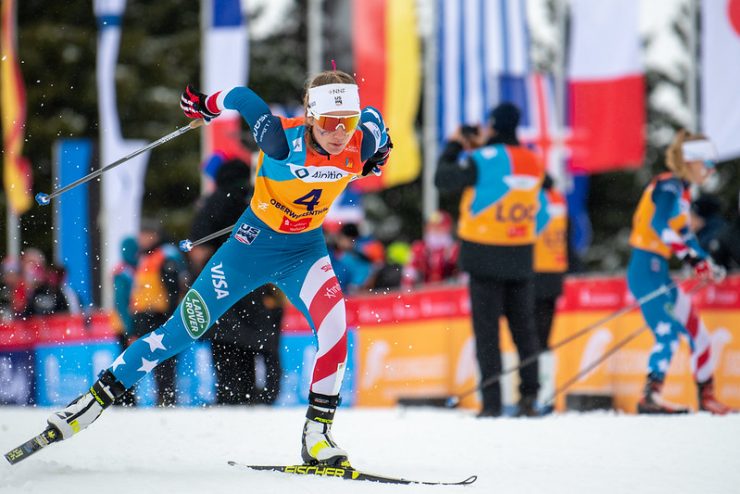
When there is a problem such as this, the correct process is to issue unofficial results with the disqualifications listed on the result sheet, notify the team captains when the unofficial results are posted, and wait for any affected parties to protest the Jury decision prior to the protest deadline.
The Jury followed that process, and the unofficial results then became the official results when protests against the decision were found to be without merit.
The bad (but unavoidable) part of that process was that the medal-winning teams spent a lot of time – right after they had finished racing – outdoors in the weather waiting for the flower ceremony. It was nearly an hour from when the last medalist finished to the time when the flower ceremony concluded. That was not particularly healthy for the skiers.
Recommendations/Caveats
Below are some generic recommendations to the various parties involved in an event. The purpose of these recommendations is not to point fingers at any of the parties involved in the relay problem. There is usually a sequence of events and choices which ends up producing a problem such as was experienced at Oberwiesenthal, and it can be difficult to determine if a single choice or event made by a single party produced a problem, let alone what roles were played in the situation by organizers, officials, coaches and athletes. So . . . these are forward-looking recommendations, not backward-looking recriminations.
Recommendations for Organizers:
- Once you have sent out course maps to the teams, do your utmost to adhere to the plan you have for the competition courses. Every change creates an opportunity for an error.
- To the extent possible, keep your courses as simple as possible. This is not always possible, but it is desirable. Organizers should be thinking about this when they are pursuing FIS homologation for their courses. Don’t think about the courses as stand-alone entities, think about how they work with the other courses, such as in the case when both classic and free courses are needed for a single race (relay, skiathlon).
- If the race involves both classic and free portions, think long and hard about whether to use a single course for both techniques, or two different courses. Is it better to race on a single course that might be a little skinny here and there, or is it better to race on two different courses that might be confusing for skiers? Ideally, think about this far enough in advance (during construction season) so that you can create a course with an E-rating for width, if that’s the best solution.
- If you are using color-coding for race courses, use different colors for each race course, ESPECIALLY for all the courses used on a single day. Using four different colors, rather than just two colors with overlapping women’s and men’s courses might have been sufficient to have avoided this problem.
- Signs are great, but signs are not enough. Unless there are extenuating circumstances, a skier should have to cross over, under or through a physical barrier in order to make a wrong turn at a junction. Use whatever materials you have, but remember these rules from the FIS ICR:
311.4.1 The marking of the course must be so clear that the competitor is never in doubt where the course goes.
311.4.3 Forks and intersections on the course must be clearly marked by visible signage, and fences or V-boards must be placed across unused parts of the course.
Recommendations for Officials/Juries
- Spend a lot of time looking at course maps and try to visualize any problems that might be caused by the course configurations. This is especially important for mixed-technique relays and skiathlons.
- Demand accurate, up-to-date maps from the organizers. Don’t let them use course maps that are out of date, or maps that don’t match FIS homologation documents
- Inspect courses thoroughly, trying to approach trail junctions the way that a skier in the heat of a race would approach them. This is not easy, but it is very important.
- If there are any problem areas that you feel are unavoidable, be sure to station a Jury member and some Organizing Committee members at that location to observe and video.
Recommendations for Coaches:
- Even though coaches try to teach skiers to be responsible for themselves, it doesn’t hurt for coaches to jointly inspect courses with skiers, especially with younger skiers at a competition venue that is new to the competitors. Two heads are better than one. Most coaches have more experience than their skiers, which should be helpful.
- If you see anything that you think is a problem, bring it up with a Jury member at the earliest possible time. Most Jury members that I know would much rather have a coach bring up a problem, especially one that is easily dealt with by a little bit of V-board. Jury members like to eliminate potential problems
Recommendations for Skiers:
- Inspect the course thoroughly. Inspect it again if you think you need to do so.
- If there are any areas where you are uncertain as to the correct way to go, ask someone for help. Ideally, ask your coach, or ask a Jury member.
- Inspect the course thoroughly. (And I know I said this just above this point.)
Summary
The disqualification of the first two teams to cross the finish line at a World Championship event is not desirable. It is bad for the sport in every respect. It is especially unfortunate for the skiers involved.
This brings us back to that oft- but incorrectly-quoted rule: “It’s the skier’s responsibility to know the course.” Whenever I hear an official make that assertion, I always ask them to show me that rule in the rulebook. There is no such rule, except for in the unwritten Apocrypha of the ICR. This bears repeating:
ICR 311.4.1 The marking of the course must be so clear that the competitor is never in doubt where the course goes.
Whether the disqualifications could have been avoided is unknowable. However, there are certainly some best practices, which, had they been well-implemented by the organizers, officials, coaches and skiers, would certainly have reduced the likelihood of the problems that occurred.
If one spends sufficient time watching and rewatching the video stream and looking at the interval times for the relay, it seems clear what “would have happened” had everyone skied the correct course. The real shame is that the fans were deprived of the opportunity to watch a crazy five-way battle for the medals which would have been tremendously entertaining.
Poland and Germany now have to play “what if” and wonder if they would have won medals. Switzerland has to wonder if they would have won the gold medal, and the U.S. and Sweden have to wonder if they would have won medals at all. That’s not a great resolution. Competition is supposed to answer those questions, not generate such questions.
So, if you occasionally or regularly fulfill the role of organizer, official, coach, or skier, keep these lessons in mind. If you do, it is highly unlikely that you will end up in a similar situation.
John Estle has, among other roles in American skiing, served as Chief of Competition for the 1984 FIS World Cup races in Fairbanks and multiple Junior National Championships and SuperTour Finals. He has served as Technical Delegate or other Jury member at several Junior and Senior National Championships and SuperTour Finals, as well as many other FIS and NRL events. He was head coach for the U.S. Ski Team from 1990–1993 (and Head Coach of the U.S. Team at the 1994 Junior World Championships). He was in Oberwiesenthal for this year’s FIS Nordic Junior and U23 World Ski Championships as a spectator and to provide news coverage for the Fairbanks Daily News-Miner.

